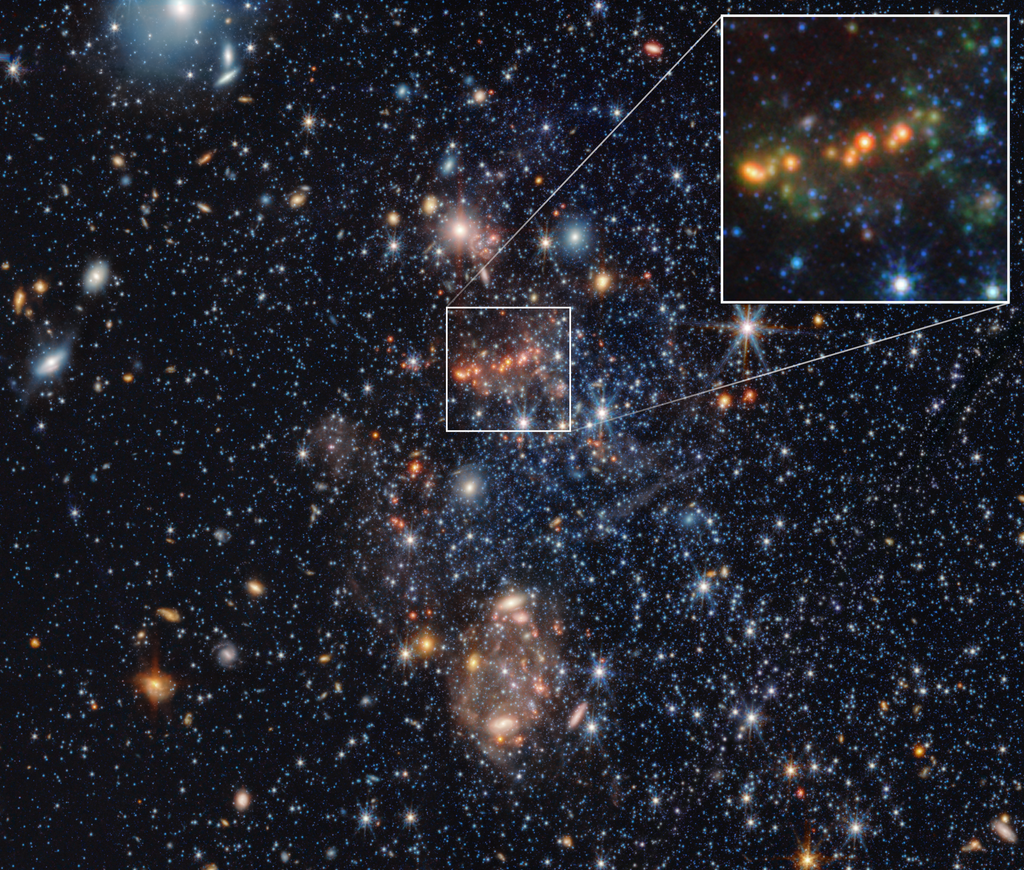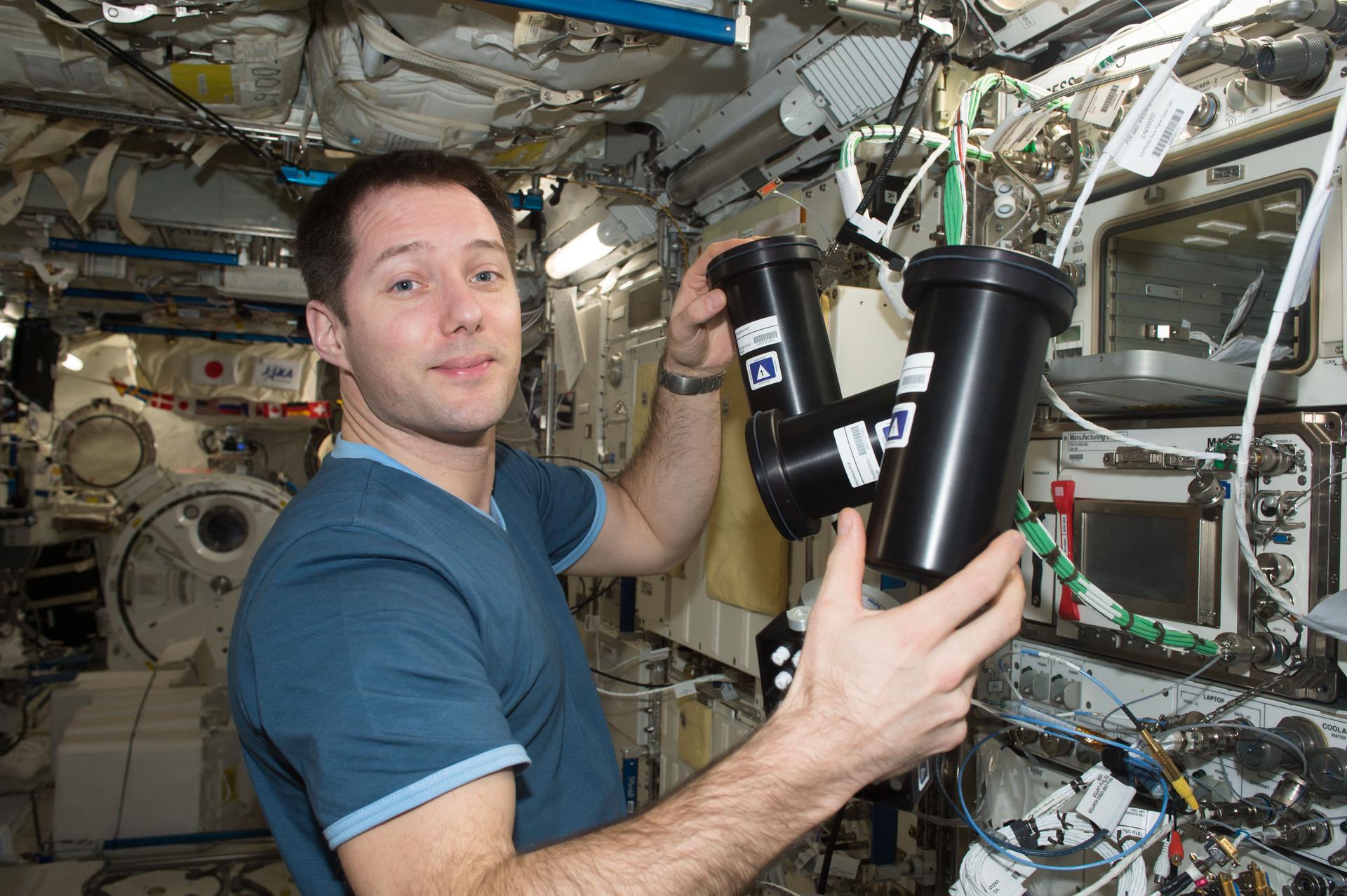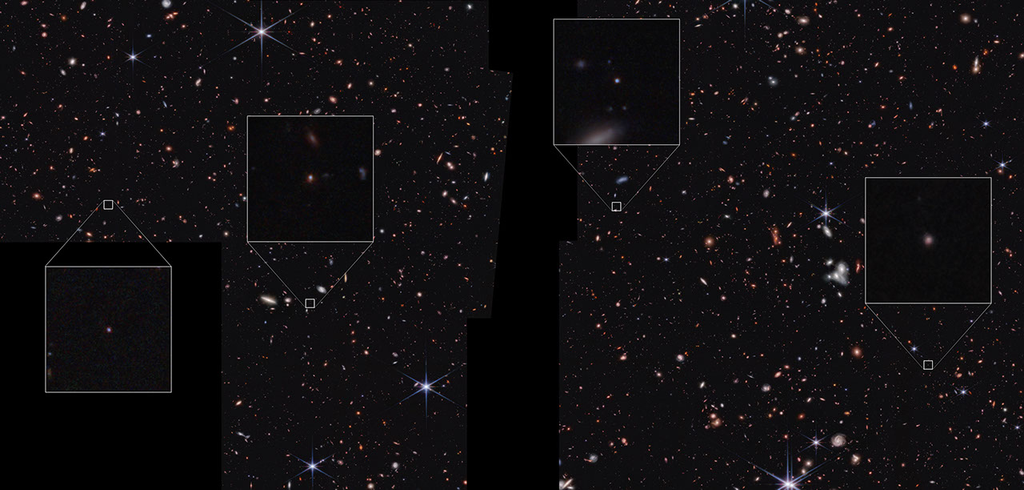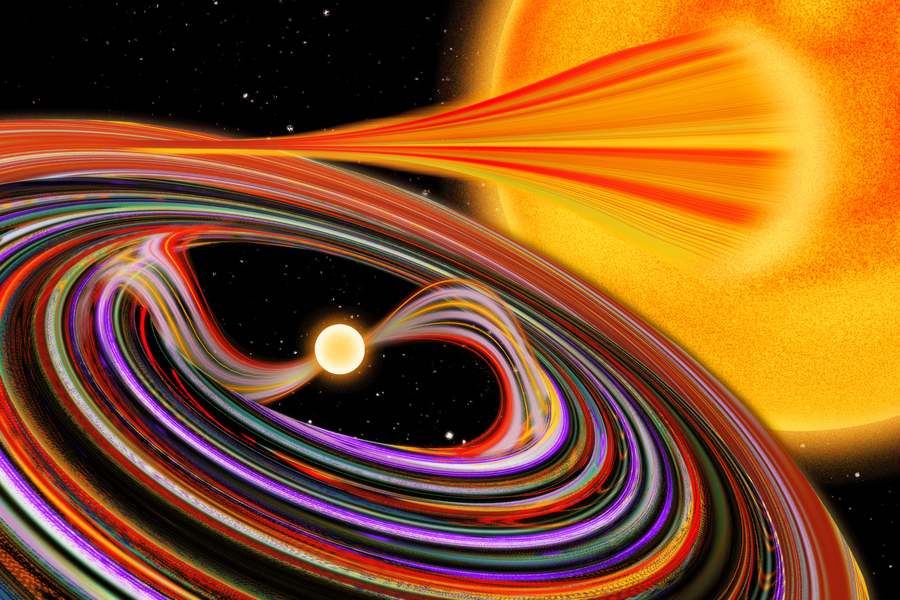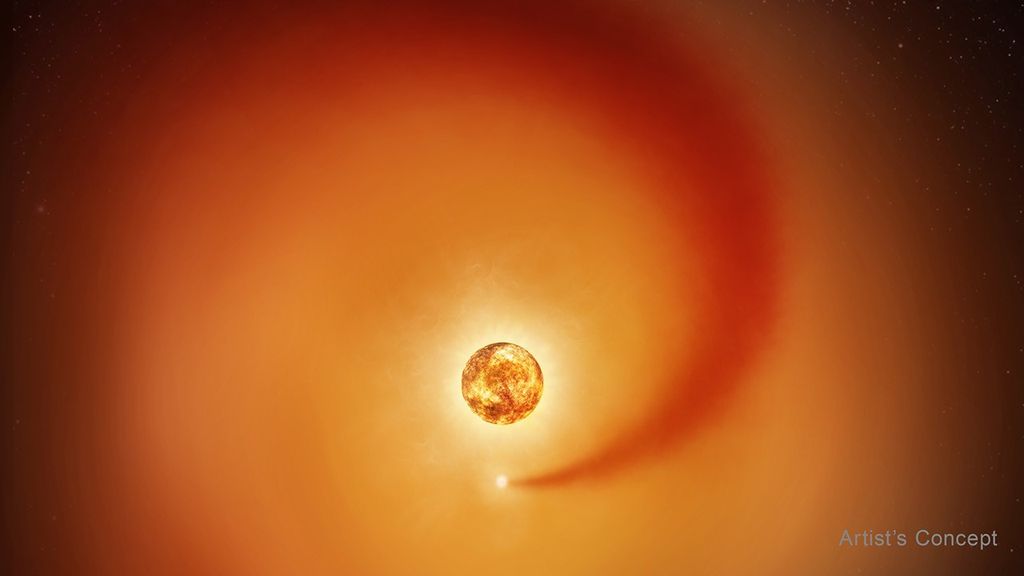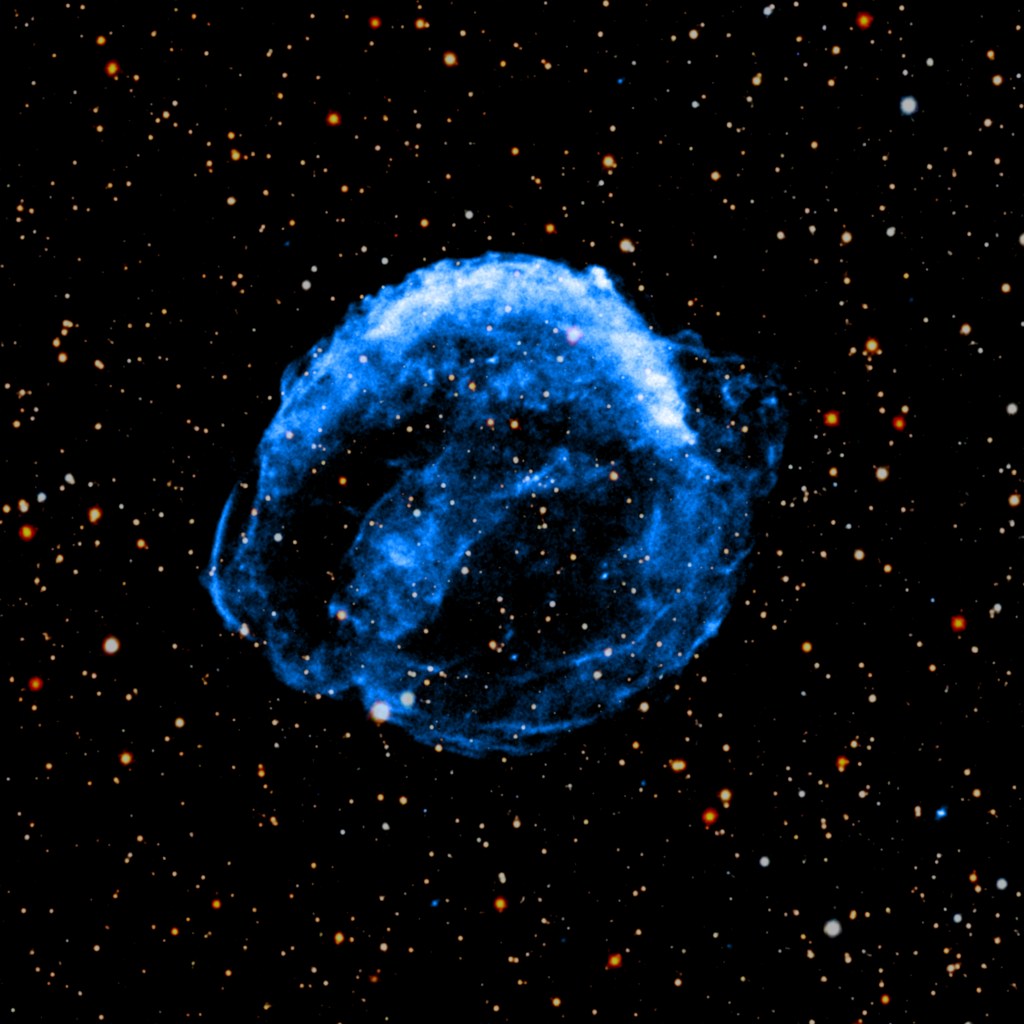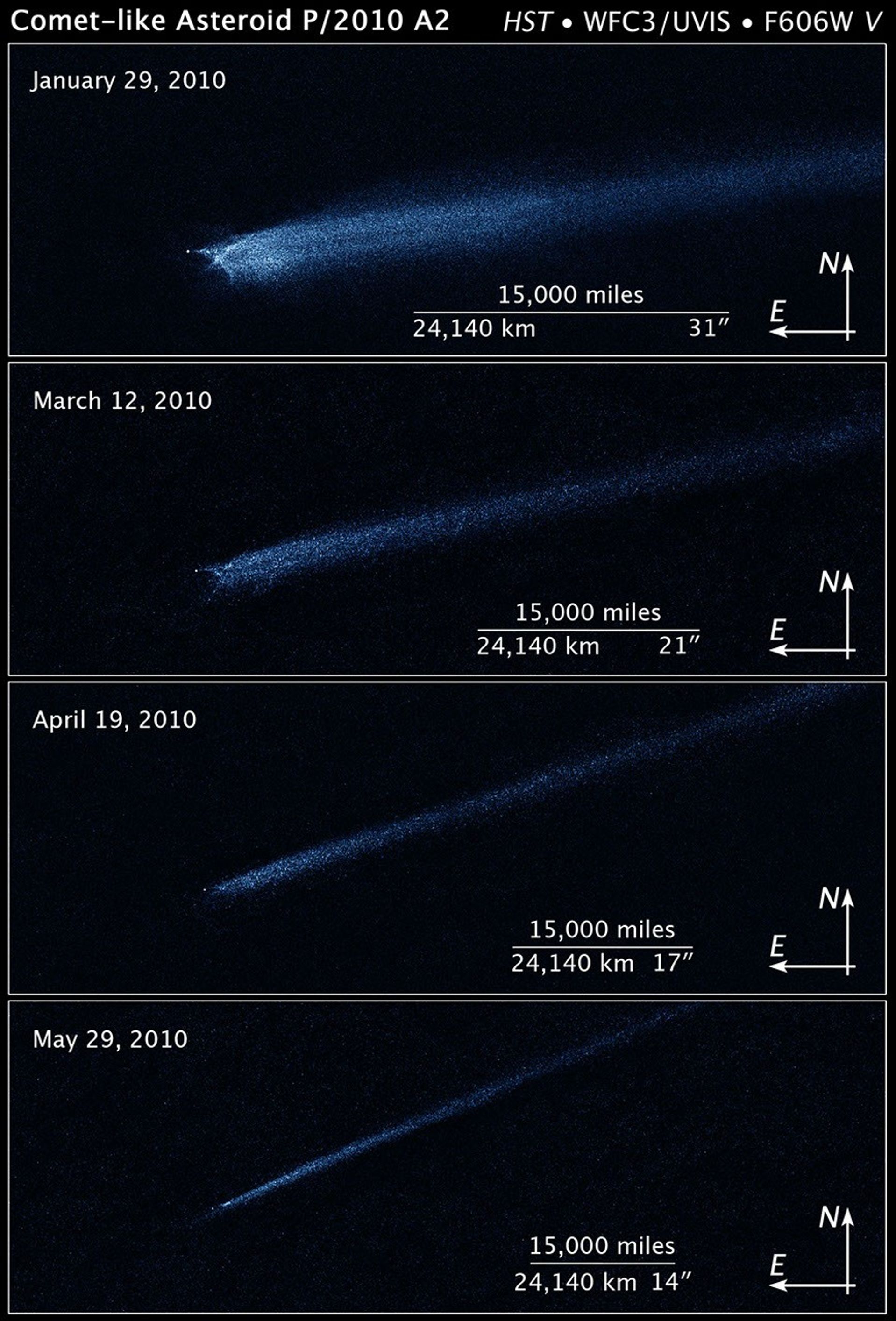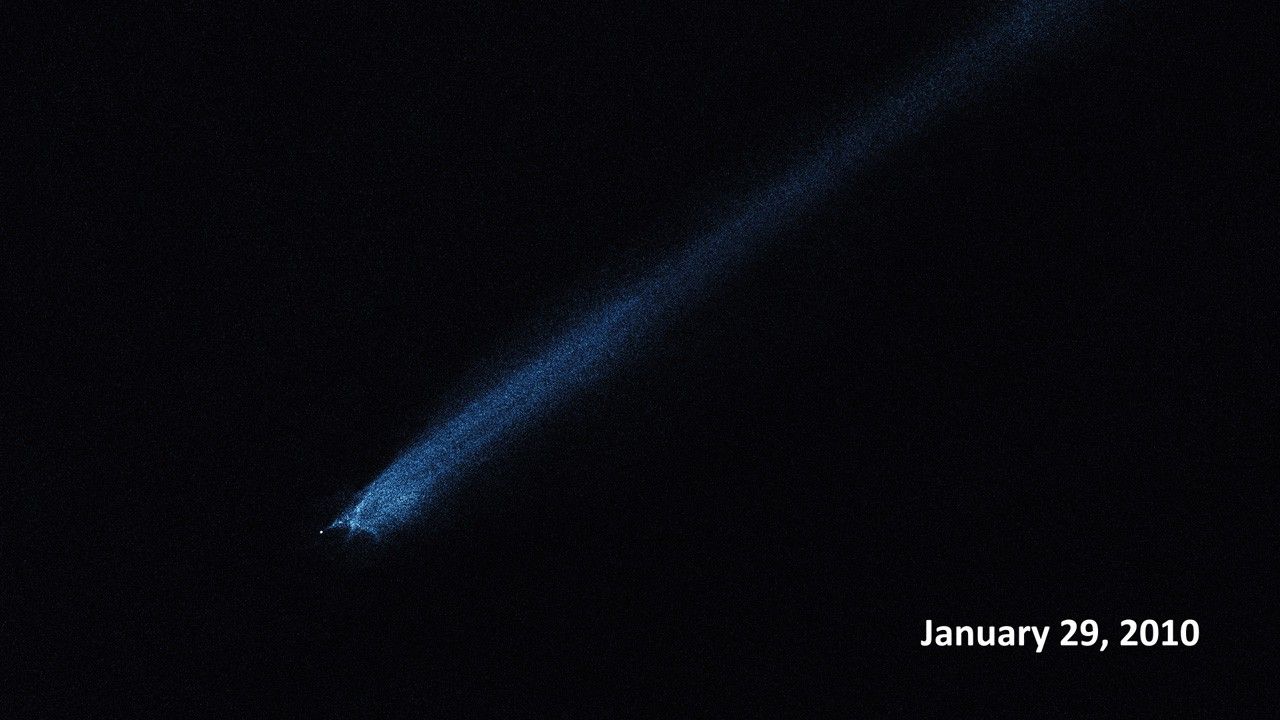1 min read
Hubble WFC3 Image of P/2010 A2 (March 12, 2010)

About the Object
- DistanceDistanceThe physical distance from Earth to the astronomical object. Distances within our solar system are usually measured in Astronomical Units (AU). Distances between stars are usually measured in light-years. Interstellar distances can also be measured in parsecs.1.564 AU (145 million mi, 234 million km)
About the Data
- Data DescriptionData DescriptionProposal: A description of the observations, their scientific justification, and the links to the data available in the science archive.
Science Team: The astronomers who planned the observations and analyzed the data. "PI" refers to the Principal Investigator. - InstrumentInstrumentThe science instrument used to produce the data.HST>WFC3/UVIS
- Exposure DatesExposure DatesThe date(s) that the telescope made its observations and the total exposure time.March 12, 2010
- FiltersFiltersThe camera filters that were used in the science observations.F606W (V)
- Object NameObject NameA name or catalog number that astronomers use to identify an astronomical object.Asteroid P/2010 A2
- Object DescriptionObject DescriptionThe type of astronomical object.Asteroid Belt Impact Object
- Release DateOctober 13, 2010
- Science ReleaseHubble Finds that a Bizarre X-Shaped Intruder Is Linked to an Unseen Asteroid Collision
- Credit

This image was originally black and white and recorded only overall brightness. These brightness values were translated into a range of bluish hues. Such color "maps" can be useful in helping to distinguish subtly varying brightness in an image.
Related Images & Videos
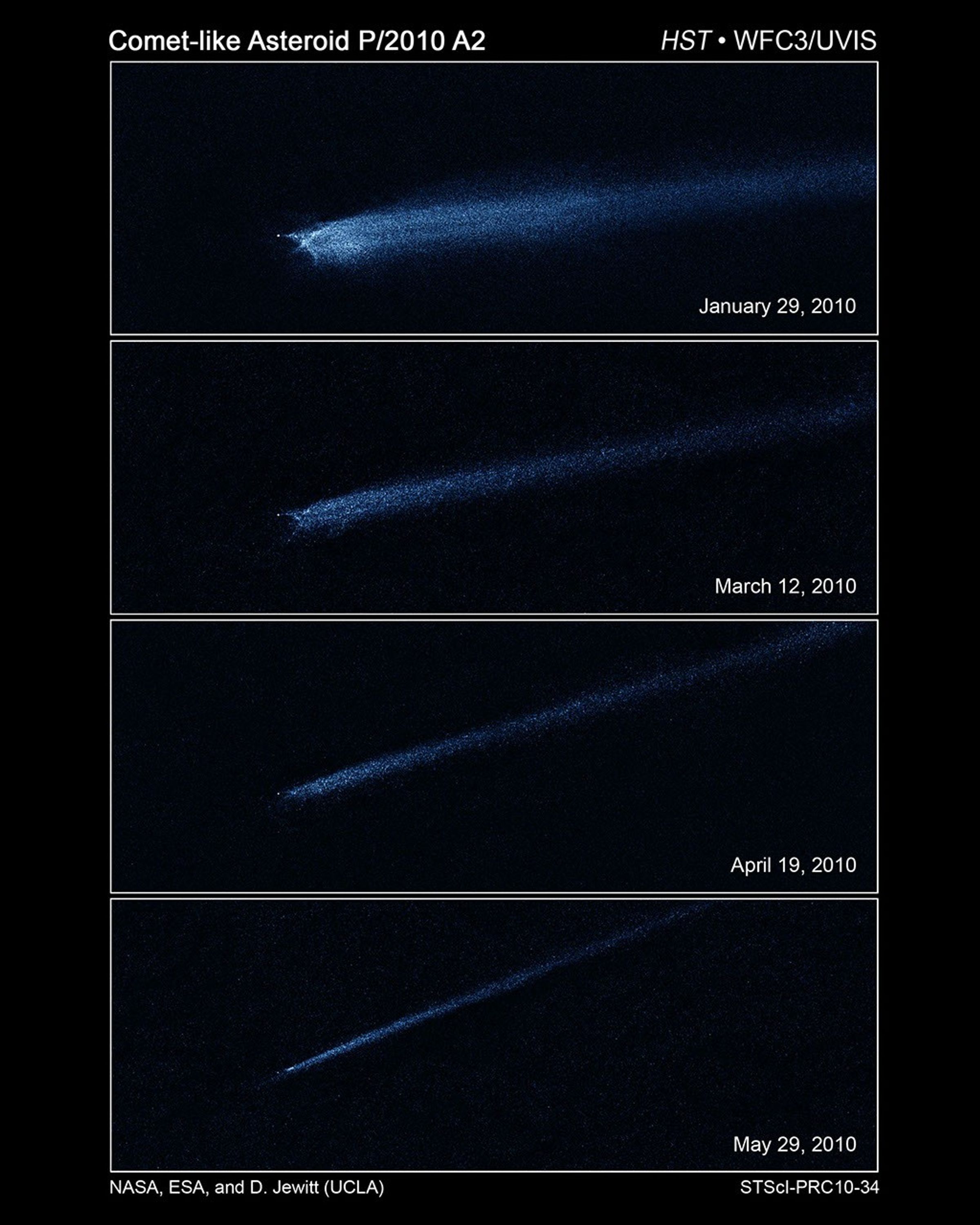
Hubble Captures Aftermath of Asteroid Collision
These four Hubble Space Telescope images, taken over a five-month period, show the odd-shaped debris that likely came from a collision between two asteroids. The Hubble images, taken from January to May 2010 with Wide Field Camera 3, reveal a point-like object about 400 feet...
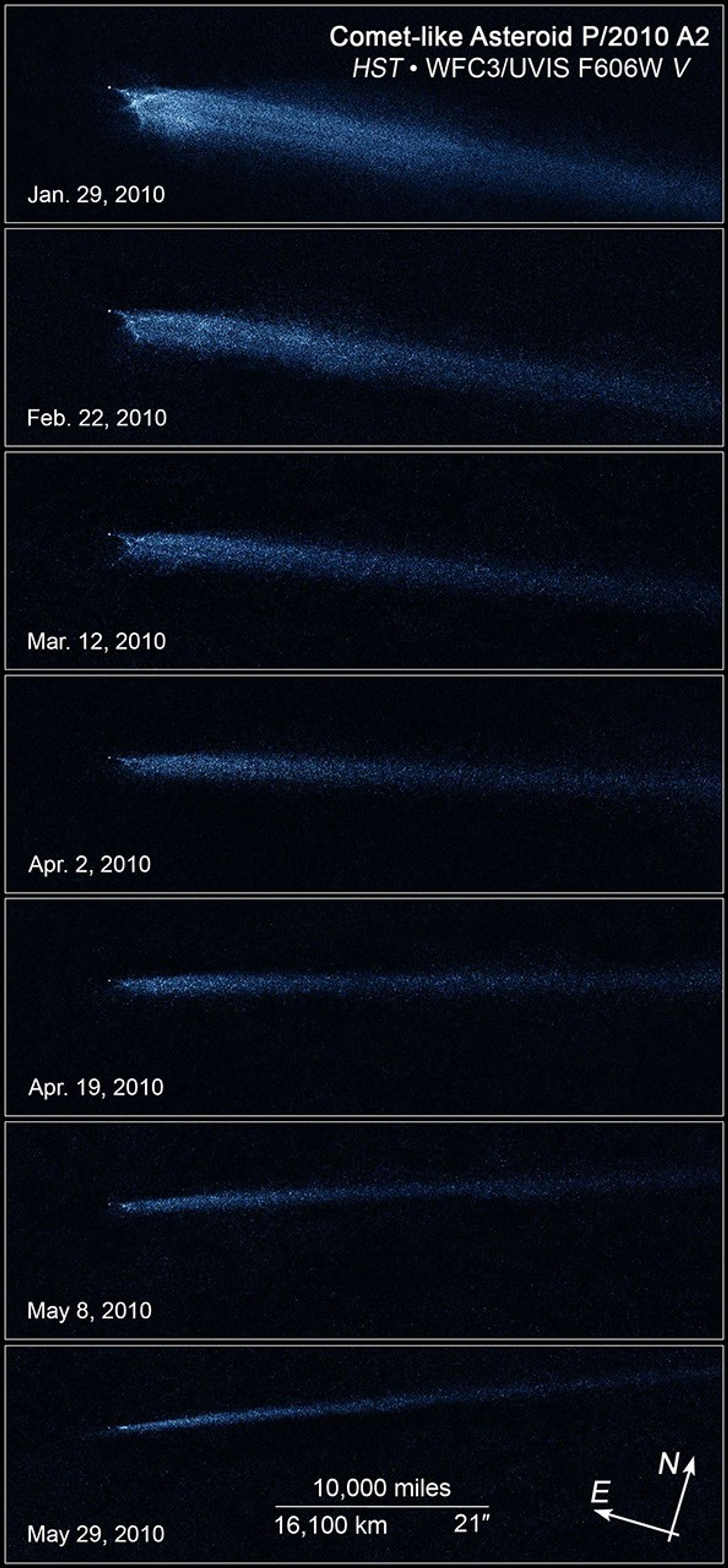
Hubble Images Reveal Aftermath of Asteroid Collision
These seven Hubble Space Telescope images, taken over a five-month period, show the odd-shaped debris from a collision between two asteroids. The Hubble images, taken from January to May 2010 with Wide Field Camera 3, reveal a point-like object about 400 feet (120 meters) wide,...
Share
Details
Claire Andreoli
NASA’s Goddard Space Flight Center
Greenbelt, Maryland
claire.andreoli@nasa.gov

